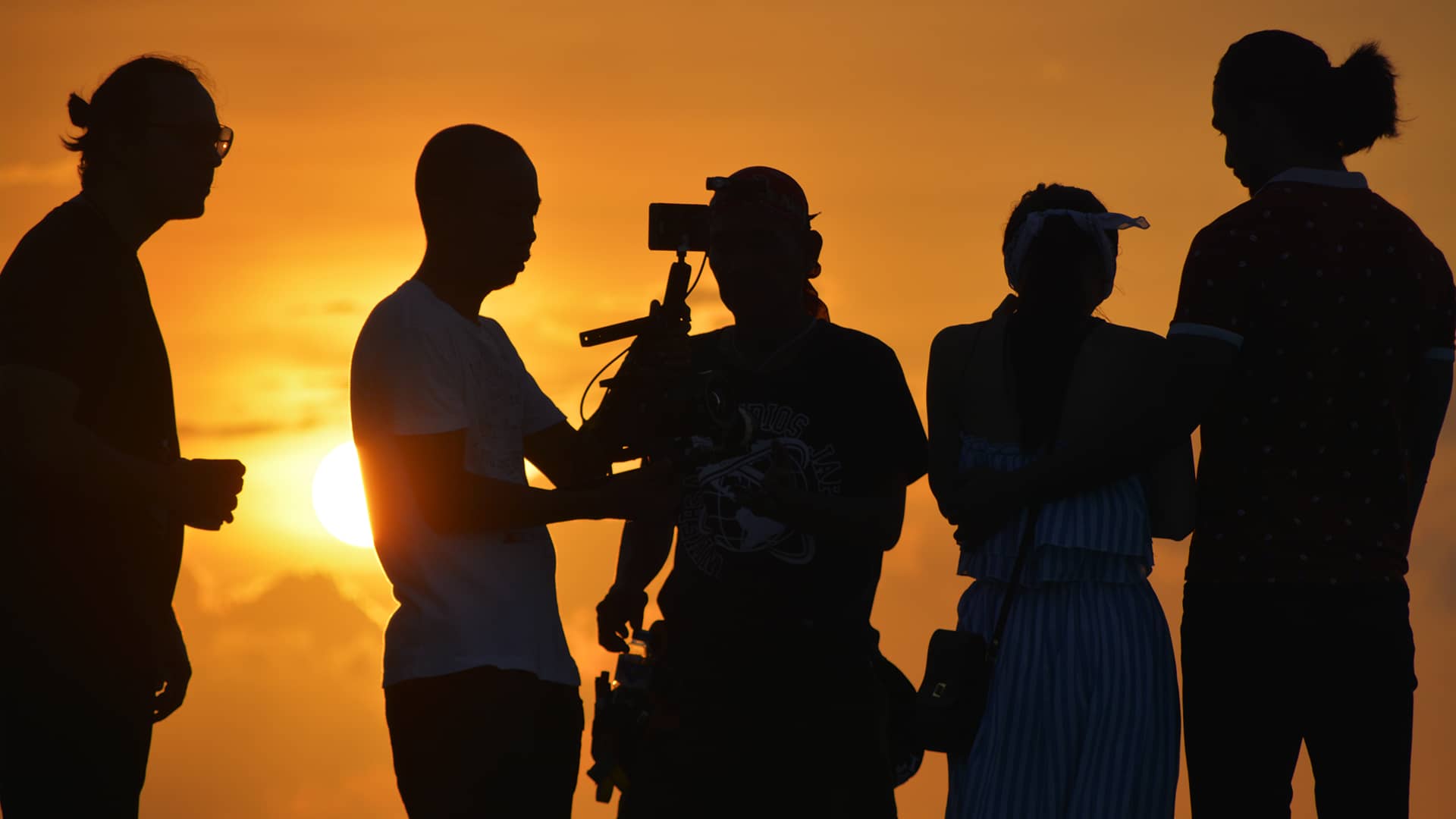I love shooting with natural light, and particularly during golden hour. In fact, whenever possible I aim to shoot exclusively with natural light, and only when necessary I will augment it with additional light sources to help enhance the look, as to avoid losing the organic aesthetic that I’m after. This bias has inevitably led me to shoot during golden hour consistently, as this time of day can offer some of the best natural light results when done right. These photos were taken during our shoot of a short film in the area of Binondo, Manila.


Golden hour or magic hour, of course refers to the hour leading up to sunset, but can also refer to the hour beginning directly after sunrise. The sun emits an incredibly beautiful, warm, and forgiving quality of light at this time of day, and it’s unique look simply can’t be replicated. Filmmakers have made a career out of shooting around sunset, and many others continue to follow suit as it’s distinctive characteristics are hard to resist.


But shooting in golden hour isn’t always easy, and many photographers and filmmakers go into golden hour shoots completely underprepared. It’s a common misconception that shooting at this time of day is easy, primarily because less gear is involved than on a typical interior or night exterior scene.

That said, just because you don’t have as many lights, c-stands, or flags lying around on set, doesn’t mean you don’t have your work cut out for you. In reality, shooting in golden hour can be far more complicated than shooting under more controlled lighting conditions, despite what it seems like on the surface.


Depending on where you are in the world, what time of year it is, and many other variables, the actual shootable time during golden hour may only be 40 minutes or less. Filmmakers often wait until the last second to start shooting in an attempt to capture the most optimal quality of light. But when the sun goes down and they realize only half of their scene has been captured, unfortunately there’s no other solution but to either reshoot a different day, or cut the scene short.


Under controlled lighting conditions you have the luxury of setting your exposure in camera, and leaving your settings exactly as they are for the duration of your scene. When shooting in any type of natural light though, you will never have this luxury as you are always going to be chasing the movement of the sun. This issue is exaggerated tremendously during golden hour, since the light can literally change by the second.
As such, if you aren’t constantly changing your exposure settings, either by opening your aperture, bumping up ISO, or adjusting your ND filters, your images are going to be all over the place, at least exposure wise. From your first take to your final take, your light levels will be drastically different. This means you’ll need to rely on heavy color correction work in order to match the shots, which of course can eat up a lot of unnecessary time and money on the tail end of your project.
This might feel like an obvious point, but I can tell you from first hand experience watching our colorist that this is an issue I have seen more often in the color suite than nearly anything else. So always remember to keep an eye on your light meter, histogram, or whatever your exposure tool of choice may be and tweak your camera settings constantly in order to capture a consistent, well exposed sequence.



Any of you that have ever shot during golden hour more than once, know that the light quality at this time of day can vary significantly based on cloud coverage and other environmental variables. A sunset one night might light up the clouds in the sky with pink and purple, and the very next night there may be no clouds in the sky at all, ultimately giving you a much more subdued look.
On a more extreme end, when there is a lot of cloud coverage, golden hour practically doesn’t exist. The hour leading up to sunset will look just like the rest of the day which is drab and dull, if there aren’t enough pockets in the clouds to let the light come through. This can cause a lot of problems, especially if you are planning to start shooting at a specific time. Let’s assume sunset is at 7PM and you want to start rolling at 6PM. By the time 6PM rolls around, the light could actually look worse than at 5PM, since not only is there still cloud coverage, but now it’s much darker, meaning you are now also fighting lower light levels.


In situations like this, all you can do is start shooting as early as possible. For instance, if you were to start shooting at 4PM, you would at least have a couple of hours of nice light even if you don’t get a sunset, before things get too dark. You might even luck out and find that the clouds start to clear away just at the perfect time, there’s no way of knowing. The bottom line is, when in doubt just start shooting. There are no guarantees with golden hour, so sometimes you just need to be willing to work with what you’ve got.

Leave a Reply